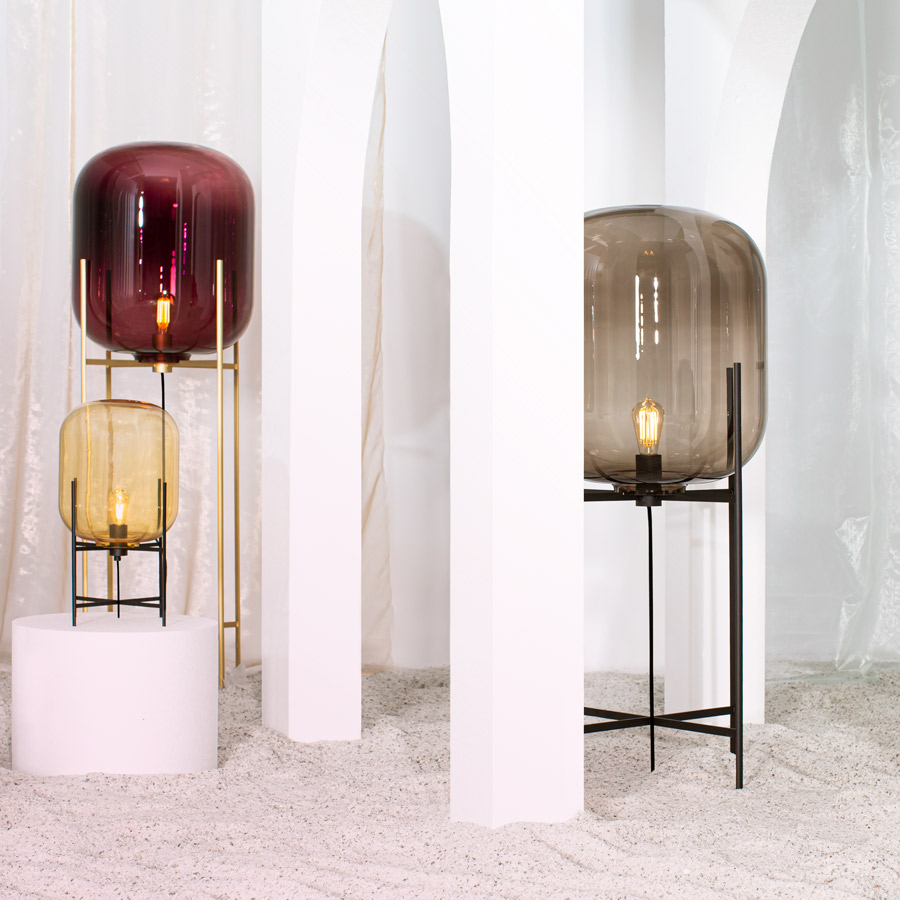Contemporary lighting has a wealth of facets that is unparalleled!
On the one extreme side you will find innovative LED technology and filigree luminaire designs! But at the same time are not only modern but also absolutely in the trend certain styles, like the Scandi Chic or the Vintage style. Even with the color scheme, diversity is in vogue nowadays and there are no limits: whether flashy, bright and wild colors or popular classic color schemes like black and white or black and gold: everything can be called modern!
This makes the choice difficult, at the same time it shows: Individuality is in demand, there is no scheme according to which contemporary lighting has to look. On the contrary, the owner and his imagination behind the concept play an increasingly important role!
This makes it clear that whether table lamps or round LED ceiling light, modernity today more than ever is not limited to a few individual aspects. Among other trends that can be observed, when talking about Contemporary Lighting, is the use of clear geometric shapes. Those geometric shapes include spheres, cubes, rectangles and more!
Crucial are the details and trifles, those effective additions that create beautiful patterns of light, that create the identifying features of a designer or brand and can thus be assigned. This is where distinction is made and where uniqueness and creativity are presented.
Regarding the materials of contemporary lighting, it remains to be said that time-tested materials such as nickel, stainless steel and textile continue to be popular. More and more often, however, novel, natural and exotic materials such as bamboo wood seem to push themselves more and more into the foreground.
Contemporary Lighting: timeless and modern through the choice of materials?
In fact, materials play a paramount role in the design and often unknowingly in the choice of Contemporary Lighting.
Example: a lamp with a wooden base and a lampshade made of fabric creates a completely different effect and impression than the exact same model with a polished metal base and a shade of gray smoked glass. Materials that hold a minimum of structure are popular and in demand therefore. Smooth fabrics, matte but also glossy surfaces, as well as concrete and glass are ideal.
Probably the most popular material for modern lighting is glass and it is easy to see and understand why this is so. Smooth lampshades made from clear or tinted glass, combined with inconspicuous lamp holders? There are few more effective measures to better set off decorations, rooms, objects and the ambience!
Wood, for example, can also look modern and timeless when used correctly! In contrast to glass, wood requires the combination with another material, such as with glass or chrome: it is important to create a contrast with the natural material to get the perfect effect!
Another timeless material, which is of course generally popular, is metal. Especially high-quality metals, which are used in the form of matte, brushed as well as shiny surfaces, are extremely stylish, multi-faceted, versatile and impressive. There are no limits here in terms of color either, from classic colors like silver, to colors that are trending right now like bronze and rose gold!
Identifying Contemporary Lighting and how to use it
It’s really exceedingly difficult to recognize contemporary lighting these days, which starts with the term’s meaning: modern is incredibly malleable, and interpretations are not only subjective, they also vary wildly from individual to individual!
What really connects contemporary lighting is the fact and characteristic that they are and must be compatible with current interior styles.
Modern lighting thus characterizes a certain degree of flexibility and compatibility!
It is important to distinguish the terms trendy and modern. While lighting that is trendy is usually modern, aside from the popular vintage trend, contemporary lighting may well not be trendy. So a distinction is necessary for accurate description and identification! Recognizing, identifying and naming contemporary lighting is therefore a difficult task. It helps, for example, to look at the colors and materials of lighting and how much they fit into the trend of the time.
This would also explain why vintage lighting can be called contemporary lighting!
Here we can see the next difficulty in picking your own contemporary lighting: For the ordinary consumer, it is incredibly difficult to see through the market. Perhaps a certain color and material for lighting is incredibly popular today, only to be outdated and out of fashion in six months. That’s why timeless and flexible lighting is so in demand, lighting that just doesn’t play off of a particular temporary or seasonal trend, but brings with it classic potential.
At the same time, of course, the same rule applies as for all luxury furniture and contemporary lighting: Colors, shape and materials of lighting must match other furniture.
Modern lighting is not just some unobtrusive piece of furniture, on the contrary, it is an eye-catcher and so in the positive sense, become a pleasantly unexciting but noble piece of jewelry that puts any environment in the right light, or negative sense, if used incorrectly or inappropriately, the center of attention.
Contemporary lighting: when brightness is matched to the room
When buying contemporary lighting, the importance of technical data is often neglected or completely disregarded.
Function and aesthetics only work together here! Thus, a 40W bulb has about 410 lumens; while the usual LED lamp for an equally bright light output just needs 4 to 6 watts. Decisive for the desired brightness effect in the room are further physical terms. These include luminous intensity, illuminance and luminance.
In addition to these terms, it must not be forgotten: The angle of radiation of contemporary lighting, as well as the dominant color scheme of other furniture must necessarily be taken into account, because, for example, walls that are dark, absorb more light than light ones.
For living rooms, for example, a certain basic lighting is indispensable. Pendant lights with preferably translucent shades, LED panels and more can help here!
A basic rule of composition and strategy for room illumination is 100 lumens per square meter: Thus, a certain basic coziness and homely atmosphere can be safely established. Of course, a successful room illumination must also show various breaks of monotony and diversity. Adding and creating light zones with the help of wall and floor lamps are proven methods here.
Don’t forget the crown jewel of contemporary lighting, effective accent lighting!
Accent lighting can be created using a variety of elements and positioning of contemporary lighting, Often, for example, table lamps are used on side tables and shelves to create desired accents.
Contemporary lighting at pulpo: table and floor lamp oda
Directly inspired by the photographed industrial monuments of the famous Düsseldorf Becher School, Sebastian Herkner combines for oda their external form and internal function of a steel foundry. Thus, the luminous homage to light becomes a source of comfort and has since become a reference for contemporary lighting design!
Find your table and floor lamp oda here today and get contemporary lighting from pulpo for your home!

